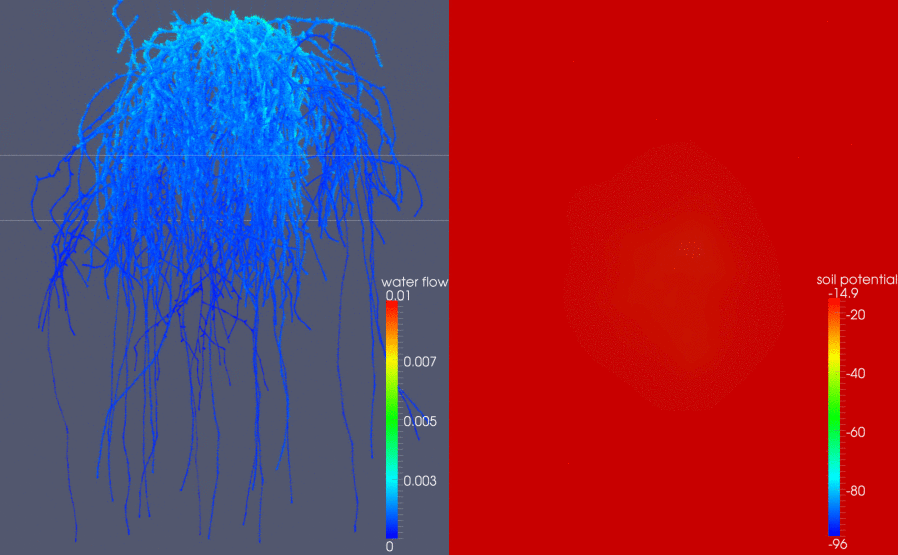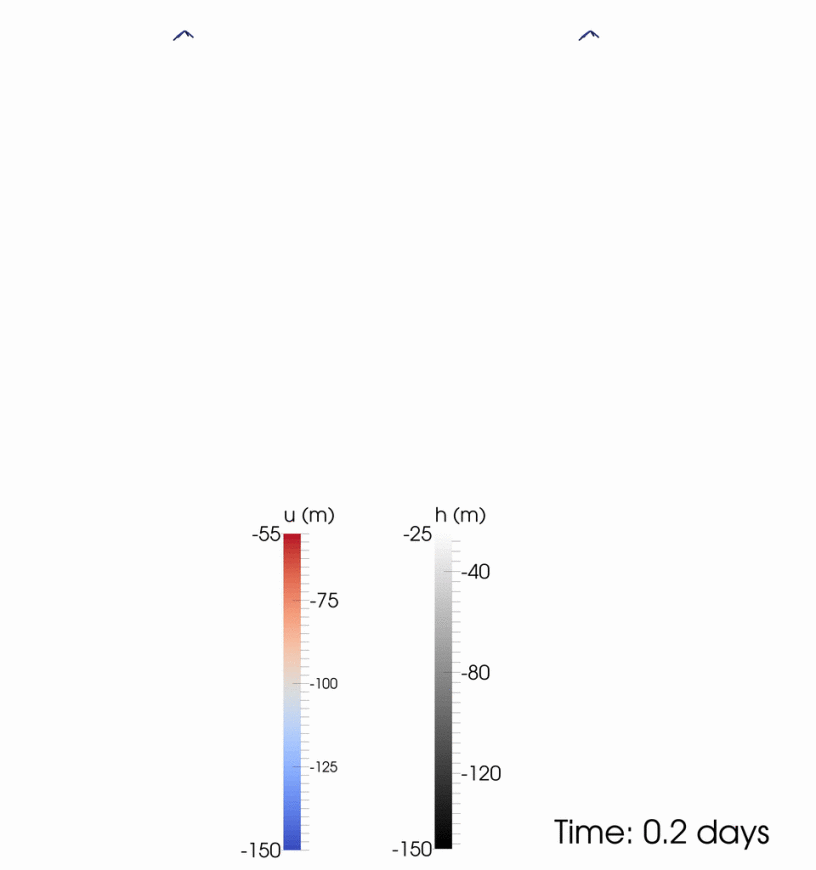This direction of research focuses on FreeFEM, a software that allows through a domain specific language the definition of a large number of PDEs. F. Hecht is one of the co-authors of this package. The goal of FreeFEM is not to be a substitute for complex numerical codes, but rather to provide an efficient and relatively generic tool for getting a quick answer to a specific problem, or prototype the resolution of a new complex problem.
Our goal is to develop further FreeFEM as a freeware parallel platform by adding several important functionalities. Those include the integration of the highly parallel linear solvers developed in the previous axis and the parallelization of the mesh generation component of FreeFEM (which is currently a limitation in FreeFEM due to both time and memory considerations).
Simulation of water and nutrient uptake by plant root systems
In the context of the development of sustainable agriculture aiming at preserving natural resources and ecosystems, it is necessary to improve our understanding of underground processes and interactions between soil and plant roots. Although the root system is responsible for taking up water and nutrients from the surrounding soil, roots are hidden below ground and measurements are difficult to obtain.
In this work, we develop mechanistic models and numerical tools for the simulation of soil water and solute transport with plant root uptake at the whole root system scale while taking the three-dimensional architecture of the root system explicitly into account. An emphasis is put on resolving the geometry of the root system as well as small scale processes occurring in the rhizosphere, which play a major role in plant root uptake. The models are governed by nonlinear parabolic equations, and can be used to study how the uptake pattern is affected by the shape and architecture of the root system.
In order to make these large 3D numerical simulations tractable, we take advantage of unstructured mesh adaptation and parallel computing tools available in FreeFEM. The mesh adaptation procedure allows us to accurately represent the geometry of the root system in the soil domain and capture the high gradients expected near the roots.
The most accurate model relies on an implicit representation of the actual surface of the roots through a level set approach, splitting the computational domain between the soil domain and the root system. Soil and root water flow are then coupled and solved in a monolithic way.
Some numerical simulations of water uptake by maize root systems are shown below.



